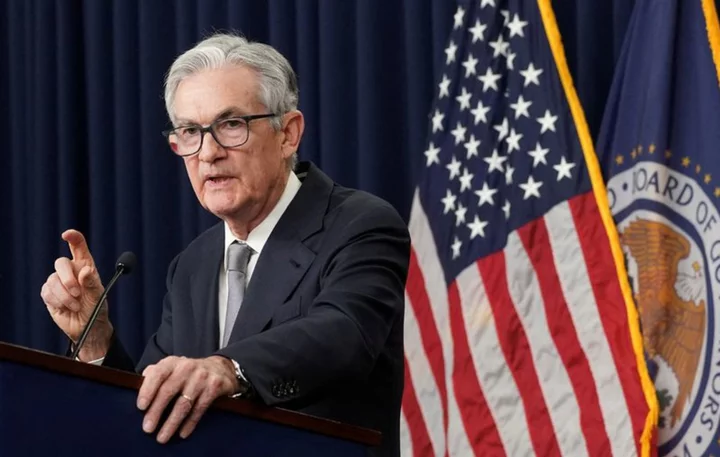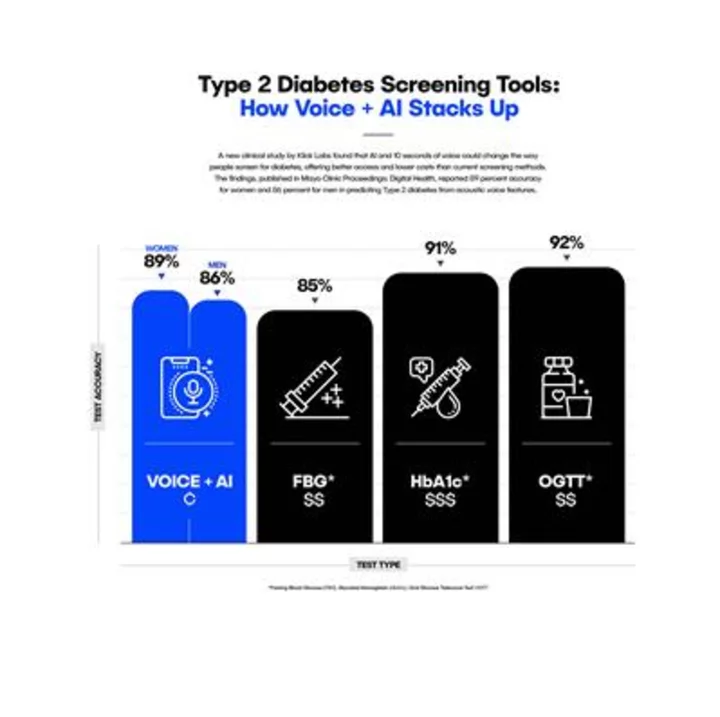By David Randall
NEW YORK Falling Treasury yields helped launch an explosive rebound in stocks and lifted U.S. government bonds from 16-year lows. Now some investors worry that further declines in yields could keep the Federal Reserve in a hawkish stance for longer, potentially hurting asset prices over the longer term.
The paradox highlights how the relationship between yields and financial conditions - factors that reflect the availability of funding in an economy and are watched closely by central bankers - has come into focus in recent months.
Surging Treasury yields sapped investors’ risk appetite and weighed on stocks over the last few months by helping tighten financial conditions as they raised the cost of borrowing for companies and households.
That relationship has reversed in recent weeks. U.S. 10-year yields - which move inversely to bond prices - have fallen nearly 50 basis points from their highs, while the S&P 500 has rebounded about 6.5% in that period. But some investors believe financial conditions could become too loose for the Fed’s comfort if yields keep falling, forcing the central bank to keep rates higher for longer in order to prevent inflation from rebounding.
Evidence of the dynamic between yields and financial conditions could be seen in last week’s 0.5% decline in the Goldman Sachs Financial Conditions Index, its sixth biggest weekly drop since 1990. That move came as the benchmark Treasury 10-year Treasury yield fell to a low of 4.48%, from just above 5%.
Average rates on 30-year mortgages, which move together with Treasury yields, fell by 25 basis points last week, the largest weekly tumble in nearly 16 months.
"The Fed may not want the 10-year Treasury to go much above 5%, but they probably don’t want it to go much below 4.5% either," said Brian Jacobsen, chief economist at Annex Wealth Management. "Their tune will modulate with rates to perhaps keep us in this range."
Jacobsen remains bullish on bonds, betting that the Fed will keep rates elevated for too long and push the economy into recession.
Some Fed officials last month said rising yields could substitute for further rate hikes by the central bank as they tightened financial conditions.
Policymakers have largely refrained from verbally pushing back on the easing in financial conditions during a flurry of appearances by policymakers this week. Fed Chair Jerome Powell speaks on Thursday in a panel at the International Monetary Fund.
Analysts at TD Securities, however, believe further easing in Treasury yields will eventually become a "double-edged sword."
"If the market reads the Fed as being dovish by continuing to push potential rate hikes into the future, financial conditions will ease. That will be responded to with a more hawkish stance by the Fed," they wrote earlier this month.
Futures markets are now pricing in a roughly 90% chance that the Fed holds rates steady at its December meeting, up from a 57.6% chance seen a month ago, and anticipate that the central bank will begin to rate cuts in May, 2024, according to CME's FedWatch Tool.
Meanwhile, the S&P 500 on Wednesday continued its longest streak of positive gains in two years with its eighth straight close in the green. The index is up 14.2% year-to-date.
Other factors are also contributing to the easing in financial conditions, include a nearly 20% decline in U.S. oil prices from their recent highs on concerns of waning demand in the United States and China.
To be sure, not every scenario sees the Fed in a higher-for-longer posture if Treasury yields continue falling. Yields falling in the context of a slowing economy, for instance, could suggest that the Fed is achieving its goal of tamping down growth, said Sameer Samana, senior global market strategist at the Wells Fargo Investment Institute.
"If the economy slows meaningfully and that’s the reason why rates are falling, the Fed will view it as confirming their overarching plan," he said.
Samana is buying longer-duration bonds when their prices dip, expecting yields to settle in the low 4% range over the next six months as the economy continues to weaken. Investors are awaiting next week’s U.S. consumer price data, which is expected to show a 0.1% monthly rise for October.
"If inflation were to come in lower than expected next week and the next round of payrolls is also muted ... the Fed would start to see this is a job well done," Samana said.
(Reporting by David Randall; Additional reporting by Saqib Iqbal Ahmed; Editing by Ira Iosebashvili and Andrea Ricci)









